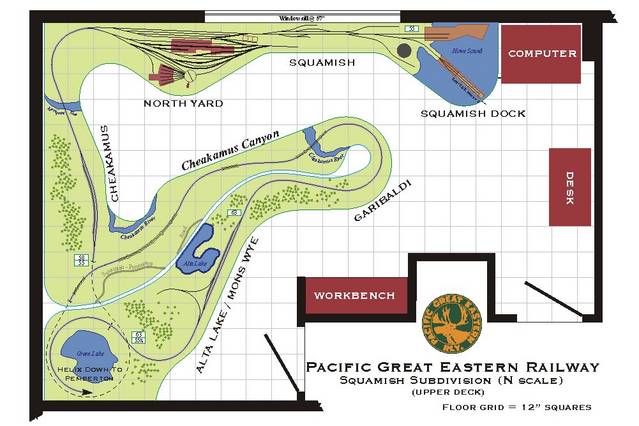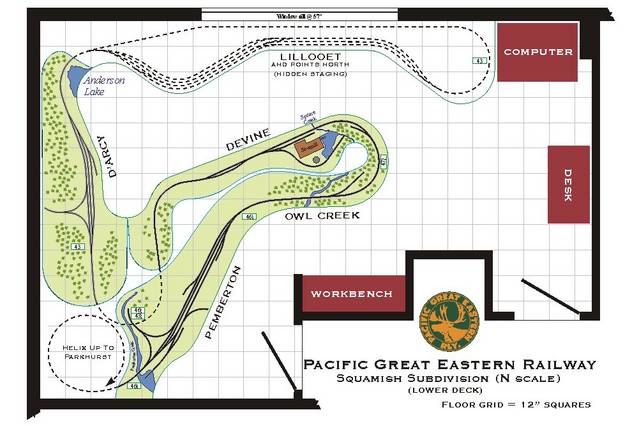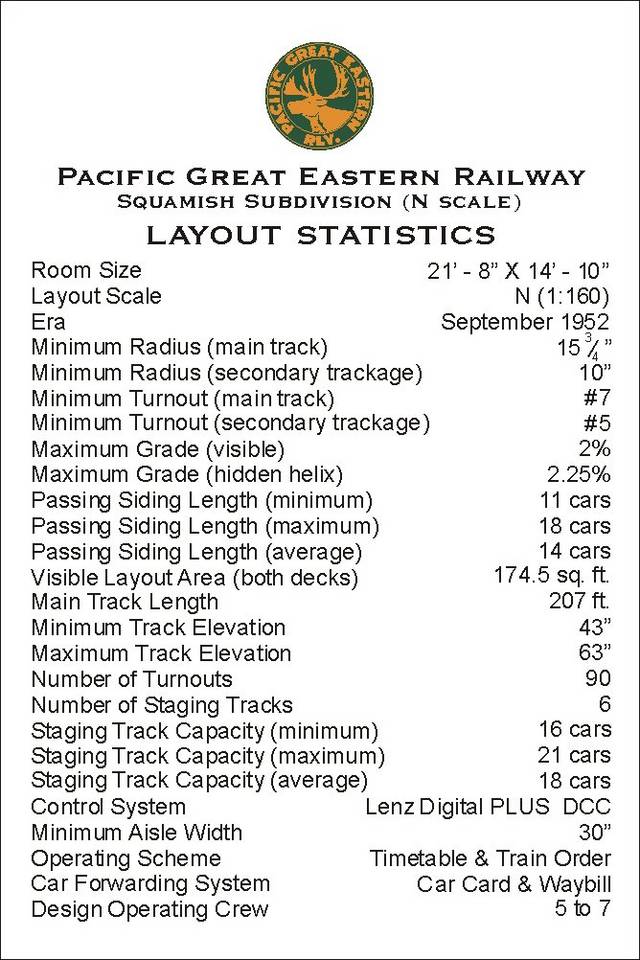Decided that posting track plans, etc. for my under construction layout would provide the impetus for me to get on and do some more construction.
The layout has been designed to represent the Squamish Subdivision of the Pacific Great Eastern (later became British Columbia Railway and BC Rail) as it was in the early 1950s - September, 1952 to be precise. The benchwork occupies a 15' X 17' area in an L-shaped room about 15' X 22'. Prior to October 1952 there was no direct rail connection to any other railway and until 1956, the only access to the PGE from Vancouver, BC, was by steamship for passengers and by tug and car barge for freight cars. In October 1952, the railway reached Prince George, BC, and a direct rail connection with Canadian National.

Beginning at the Southern terminus of Squamish Dock, the line proceeds through the town of Squamish, past the railways shops at North Yard, then crosses the Mamquam River, passing through Cheakamus before entering a hidden 3/4 turn climb that leads to the scenic Cheakamus Canyon. The 12' long canyon scene is about a 1/3 scale representation of the area from Mile 17.95 to Mile 19.0. The Mile 17.95, Mile 18.1, Mile 18.3 and Mile 19.0 bridges are modelled full size with only the distance between them compressed. Leanig the canyon, the road crosses Brandywine Creek on a prototypicall rare bridge at the brink of a waterfall and continues to Alta Lake/Mons Wye at the summit of the Coast Range before entering a 6 2/3 turn helix down to Pemberton, on the lower deck.

After leaving the helix, the railway passes through the town of Pemberton, BC, the proceeds to Devine (site of Blackwater Timber's sawmill and planer mill), then on to D'Arcy at the Western end of Anderson Lake. A convenient prototype tunnel at Mile 88.0 (2 miles North of D'Arcy) leads to the hidden staging yard that represents Lillooet and all points North.
The geographic reversal of the relative elevations of Squamish and Lillooet was done to eliminate having the staging yard above the operationally busy town of Squamish and also to avoid vertical restriction on the signature scenic scene of the Cheakamus Canyon.

Statistics for the layout are shown above. Operationally, I expect the layout to provide ample work to keep a crew of 5 to 7 (including Dispatcher) busy for a 2 1/2 hour operating session.
Regards,
Greg Kennelly